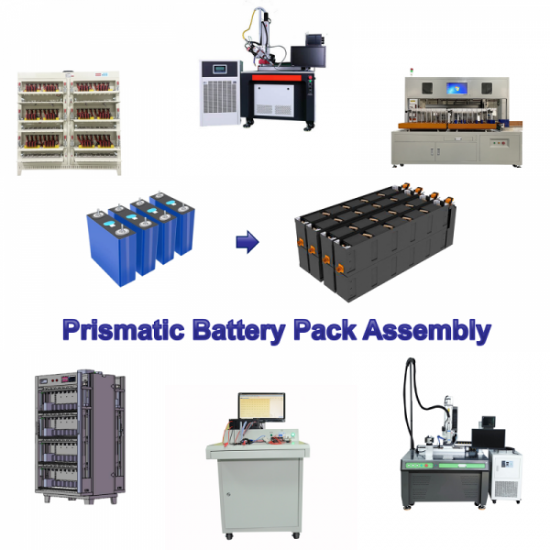Lith Corporation, founded in 1998 by a group of material science doctor from Tsinghua University, has now become the leading manufacturer of battery lab&production equipment. Lith Corporation have production factories in shenzhen and xiamen of China.This allows for the possibility of providing high quality and low-cost precision machines for lab&production equipment,including: roller press, film coater,mixer, high-temperature furnace, glove box,and complete set of equipment for research of rechargeable battery materials. Simple to operate, low cost and commitment to our customers is our priority.
What is an EV Car Battery Manufacturing Plant?
An EV (Electric Vehicle) Car Battery Manufacturing Plant is a dedicated industrial facility designed to produce lithiumion battery cells, modules, and packs for use in electric vehicles. It encompasses the entire production lifecycle, from raw material processing to final battery system integration and testing.
This type of plant integrates:
Battery cell fabrication lines
Module and pack assembly systems
Quality assurance and testing labs
Material handling and logistics infrastructure
Digital manufacturing systems (MES, IoT, AI)
Supporting utilities and environmental control systems
These plants are often referred to as Gigafactories when they reach gigawatthour (GWh) scale output — capable of supplying batteries for hundreds of thousands of EVs annually.
Such facilities are essential for:
Automotive OEMs seeking vertical integration (e.g., Tesla, BMW, Ford)
Battery manufacturers aiming to expand global capacity (e.g., CATL, LG Energy Solution, Panasonic)
New market entrants building localized supply chains
Governments supporting national energy and mobility goals
Key Objectives of an EV Battery Manufacturing Plant
1. Mass Production of HighPerformance Battery Systems
Deliver reliable, highquality battery cells, modules, and packs at scale
Meet automotivegrade standards for safety, performance, and longevity
2. Localization of Supply Chain
Reduce reliance on imported components and materials
Support domestic EV manufacturing and job creation
3. Integration of Advanced Technologies
Adopt nextgen chemistries (e.g., solidstate, sodiumion)
Implement dry electrode technology, AIbased quality control, and smart automation
4. Cost Optimization Through Scale and Efficiency
Lower battery cost per kWh via process optimization and automation
Enable more affordable EVs and faster adoption
5. Sustainability and Circular Economy
Integrate recycling systems for endoflife batteries
Use renewable energy and ecofriendly production practices
Core Stages in an EV Battery Manufacturing Plant
A modern EV battery manufacturing plant typically includes the following integrated production stages:
1. Battery Cell Production Line
This is where individual lithiumion cells are manufactured. The line includes:
Slurry Mixing: Combining active materials (NMC, LFP), binders, and solvents
Electrode Coating: Applying slurry onto copper (anode) and aluminum (cathode) foils
Drying & Calendering: Removing solvent and compressing electrodes to desired density
Slitting: Cutting coated foils into precise widths
Stacking or Winding: Assembling cathodes, separators, and anodes into stacks or jellyrolls
Cell Assembly: Inserting electrodes into cases, welding tabs, and sealing cells
Electrolyte Filling: Injecting electrolyte under ultradry conditions (<1% RH)
Formation & Aging: First charge/discharge cycle and stabilization period
Final Testing: Capacity, internal resistance, and safety checks
2. Battery Module Assembly Line
Once cells are produced, they are grouped into modules with integrated thermal management and electrical connections.
Key steps include:
Cell Sorting: Matching cells by voltage, capacity, and resistance
Module Stacking: Arranging cells in series/parallel configurations
Busbar Welding: Connecting cells with laserwelded busbars
Thermal Interface Material (TIM) Application: Ensuring even heat distribution
Module Housing: Enclosing cells in protective frames
BMS Integration: Installing sensors and connectors for monitoring
3. Battery Pack Assembly Line
Modules are then assembled into complete battery packs, ready for installation in vehicles.
Steps include:
Pack Frame Preparation: Mounting brackets, cooling plates, and structural supports
Module Installation: Placing and securing modules inside the pack enclosure
Wiring Harness Installation: Connecting modules to the BMS and vehicle interface
BMS Final Integration: Programming and validating software and communication protocols
Cooling System Integration: Installing liquid cooling loops and insulation
Sealing and Leak Testing: Ensuring water and dust resistance (IP67+)
Final Functional Testing: Full poweron test, diagnostics, and safety checks
4. Testing and Validation Lab
A dedicated lab ensures that every component and finished product meets automotivegrade standards.
Testing includes:
Electrical Performance Testing: Charge/discharge cycles, efficiency, and consistency
Mechanical Testing: Vibration, impact, and compression tests
Environmental Testing: Temperature extremes, humidity, salt spray
Safety Testing: Overcharge, short circuit, nail penetration, and thermal runaway
Lifetime and Cycle Testing: Predicting longterm performance and degradation
5. Battery Management System (BMS) Development Center
The BMS is the brain of the battery system, responsible for:
Monitoring voltage, current, and temperature of each cell
Balancing charge across cells for optimal performance
Communicating with the vehicle’s central computer
Managing thermal events and fault detection
Development includes:
Firmware design and validation
Hardware design and PCB layout
Communication protocol integration (CAN, Ethernet)
Functional safety compliance (ISO 26262, ASILD)
6. Clean Room and Dry Room Infrastructure
To ensure moisturesensitive processes like coating and electrolyte filling are safe and consistent, the plant includes:
Ultralow humidity zones (<1% RH)
Solvent recovery systems
Air filtration and fire suppression systems
Explosionproof enclosures for flammable environments
Prismatic Cell Assembly Line
7. Manufacturing Execution System (MES) and Digitalization
Modern battery plants rely heavily on smart manufacturing systems:
Realtime data acquisition and analytics
IoTenabled sensors and PLCs
MES for traceability, scheduling, and quality control
Predictive maintenance and yield optimization
Digital twins for simulation and training
8. Logistics and Material Handling
Efficient movement of materials and products is critical:
Automated guided vehicles (AGVs) and conveyor systems
Justintime inventory for raw materials and components
Climatecontrolled storage for sensitive materials
Packaging and shipping systems for finished packs
9. Energy and Sustainability Infrastructure
To support continuous operation and meet ESG goals:
Onsite renewable energy generation (solar, wind)
Battery energy storage systems (for peak shaving)
Water treatment and recycling systems
Waste management and solvent recovery units
Carbon footprint tracking and offsetting strategies
Types of EV Battery Manufacturing Plants
Depending on ownership and strategy, these plants can be categorized as:
1. OEMOwned Gigafactories
Built and operated by automotive companies
Example: Tesla Gigafactory Nevada, Ford BlueOval plants
Offers full control over integration and supply chain
2. Battery Manufacturer Gigafactories
Operated by independent suppliers
Example: CATL, LG Energy Solution, BYD
Supplies to multiple OEMs globally
3. Joint Venture (JV) Gigafactories
Collaborations between OEMs and battery makers
Example: BMW & Northvolt, Stellantis & Samsung SDI
Shares investment, expertise, and risk
4. GovernmentSupported Battery Hubs
Backed by national policies and incentives
Example: India’s PLI Scheme, EU Battery Alliance, U.S. Inflation Reduction Act (IRA)
Aims to build domestic battery ecosystems
Key Considerations When Building an EV Battery Manufacturing Plant
When planning or expanding your battery plant, consider the following factors:
| Area | Consideration |
|||
| Location | Proximity to raw materials, OEMs, skilled labor, and transportation |
| Capacity Planning | Annual output in GWh (e.g., 10 GWh, 50 GWh, 100 GWh) |
| Battery Chemistry | NMC, LFP, solidstate, etc. |
| Cell Format | Cylindrical, pouch, prismatic |
| Automation Level | Manual, semiauto, fully automatic |
| Factory Layout | Clean room placement, workflow, scalability |
| Integration Strategy | Celltopack, modulelevel integration |
| Environmental Compliance | Fire safety, emissions, waste treatment |
| Workforce Development | Training engineers, technicians, operators |
| Partnerships | Suppliers, OEMs, research institutions |
Benefits of an EV Battery Manufacturing Plant
Accelerates EV adoption through stable, largescale battery supply
Reduces battery costs via economies of scale and automation
Strengthens local industry and creates hightech jobs
Enhances energy independence and national security
Enables tech leadership in nextgeneration batteries
Supports sustainability through green manufacturing and recycling
Leading Companies in EV Battery Manufacturing Plant Development
Here are some of the key players involved in designing and operating EV battery manufacturing plants:
Battery Manufacturers:
CATL (China) – World's largest battery supplier
LG Energy Solution (South Korea) – Global expansion plans
Panasonic (Japan) – Longtime partner of Tesla
BYD (China) – Produces both batteries and EVs
Samsung SDI (South Korea) – Expanding in Europe and North America
Northvolt (Sweden) – European sustainable battery leader
Automotive OEMs:
Tesla (USA) – Multiple Gigafactories worldwide
Ford & SK On (USA & South Korea) – Joint venture plants
BMW & Northvolt (Germany) – Gigafactory in Europe
Volkswagen Group (Germany) – Investing in European Gigafactories
Stellantis (Global) – Partnering with Samsung SDI and Factorial
Equipment and Automation Providers:
KUKA (Germany) – Robotics and automation solutions
Siemens (Germany) – Digitalization and MES platforms
Trumpf, Coherent, IPG Photonics – Laser welding and cutting systems
Hanson Robotics, Gree EnergyTech – Integrated battery line solutions
B&R Automation (ABB subsidiary) – Smart manufacturing systems
Engineering and EPC Firms:
Bechtel, AECOM, Hatch, Black & Veatch – Turnkey plant construction
Wood, Jacobs, GHD – Engineering and sustainability consulting
Need Help Designing or Optimizing Your EV Battery Manufacturing Plant?
If you're looking to build, expand, or optimize your EV battery manufacturing plant, I can help you with:
Master planning – Site selection, capacity roadmap, and zoning
Process engineering – Battery chemistry, format, and production flow
Factory layout design – Space utilization, clean/dry room integration
Equipment sourcing – Bestinclass machinery and automation partners
Sustainability strategy – Green energy, recycling, circular economy
Cost estimation and ROI analysis – CapEx, OpEx, breakeven modeling
Compliance and safety systems – Fire protection, environmental permits, worker safety
All you need to do is provide the following information:
Battery chemistry and cell format (e.g., NMC, LFP, cylindrical, pouch)
Target annual production capacity (in GWh)
Plant location and available infrastructure
Level of automation and digitalization desired
Current team expertise and strategic goals




 Online service
Online service
